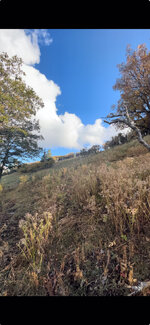Had some similar experiences as you guys (although not as long or as many miles) on my NM trip. Muscular fatigue was near zero, except for a few sections we were on our tippy toes going up. I am happy with the results considering I started these about 5 weeks before the hunt. 30lbs felt effortless going up and down.
Our limiting factor was our lungs in most places. Likely because we came from sea level straight to 7-9k with no acclimation and we are used to moving too fast. I'm too used to racing around everywhere with my ruck on and I think that's probably not the play in steep terrain - especially on longer trips. Lessons learned for next trip...
(bonus points if you can spot the bull)

Our limiting factor was our lungs in most places. Likely because we came from sea level straight to 7-9k with no acclimation and we are used to moving too fast. I'm too used to racing around everywhere with my ruck on and I think that's probably not the play in steep terrain - especially on longer trips. Lessons learned for next trip...
(bonus points if you can spot the bull)

Last edited:
